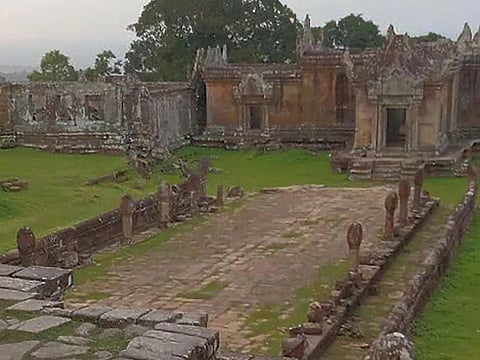Why an ancient temple is sparking tensions between Thailand and Cambodia
Preah Vihear temple is revered by Cambodians and their Thai neighbours

Tensions between Thailand and Cambodia have flared again, with deadly clashes along their disputed frontier. At the centre of the dispute lies the Preah Vihear temple, a religious site revered by both Cambodians and their Thai neighbours.
Preah Vihear is an ancient temple complex perched atop the Dangrek Mountains, straddling the Thai-Cambodian border. Its control has shifted over centuries, according to a report by the Stanford Program on International and Cross-Cultural Education.
Built during the 11th and 12th centuries — at the height of the Khmer Empire — the temple reflects early Hindu and Buddhist influences. The Khmer kings, who constructed the iconic Angkor complex, once ruled much of mainland Southeast Asia, including parts of present-day Thailand.
Though built by the Khmer, Preah Vihear — known in Thailand as Phra Viharn — has not always remained under Cambodian control. Located about 95km from Ta Muen Thom, another 12th-century Shiva shrine, Preah Vihear is more easily accessed from the Thai side, adding to the complexity of the dispute.
The French map
While the Khmer Empire once dominated the region, the area around Preah Vihear later fell under the rule of Siamese kingdoms and eventually the modern Thai state. In 1907, French colonial officials drew a map placing the temple within Cambodian territory. Although Siamese (Thai) members of the joint border commission did not formally approve the map, they did not raise objections at the time, according to the Stanford report.
In 1941, Thailand seized the temple but returned it to French-administered Cambodia during the Second World War. After France withdrew in 1953, Thai troops reoccupied the area. Cambodia protested and brought the matter to the International Court of Justice (ICJ) in 1959. The ICJ ruled in Cambodia’s favour in 1962, citing Thailand’s earlier acceptance of the French-drawn map.
Despite the ruling, resentment has lingered for decades. Both countries continue to patrol the contested area, resulting in recurring skirmishes. Instead of serving as shared cultural heritage, the temples have become powerful symbols of national identity and historical grievance.
Sign up for the Daily Briefing
Get the latest news and updates straight to your inbox







